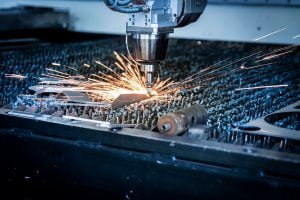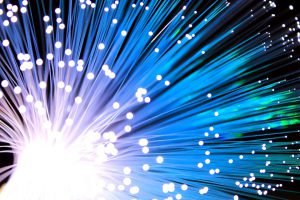Fibre laser cutting and engraving machines are diverse and powerful, with applications across multiple industries and a central role in thousands of businesses around the world.
Fibre lasers can be used for laser marking automotive parts to affix serial numbers or bar codes to manufactured aerospace parts, by medical device companies to mark their devices with unique identification codes, and by product designers who use laser engraving to transfer their art and designs onto a variety of materials with laser etching or engraving, or by manufacturing companies to cut metals into appropriate shapes for a nearly any application.
Fibre lasers represent a single tool with a variety of use cases, so let’s take a close look at what these machines are made of and what they can accomplish in the industrial environment.
Components of a Fiber Laser Cutting Machine
Let’s take a look at the core components of fibre laser cutting systems and how they work together to accomplish tasks across a variety of applications.
Fiber Laser
The fibre laser itself is the most important and most expensive component in a laser cutting machine. This type of laser uses an optical fibre doped with rare-earth elements to generate light excitation and produce a strong beam that can engrave, etch, mark, or cut a variety of materials.
Fibre optics offer some key advantages in laser marking – they produce a high-quality optical beam because of their wave-guiding properties and with the light already coupled into a flexible fibre, the beam is readily delivered to a focusing element.
Laser Head
The laser head on your typical fibre laser cutting machine consists of a focusing mirror, focusing lens, nozzle, sensor, and a control system. Its purpose is to optimize the cutting function of the laser by focusing its energy accurately and precisely on the intended target or material.
The laser head can be adjusted to increase or decrease its distance from the target material, changing the light focal length and the intensity of the laser beam as it marks or engraves the material.
CNC System
Fibre laser cutting machines are computer numerically controlled (CNC). The CNC directly controls the machine tool, moderating the movement of the laser head in the X, Y, and Z axes and simultaneously moderating the power output of the laser to produce markings that are exactly in accordance with user specifications.
Laser machines are coupled with special software that translates vector files which contain images or designs into mathematical instructions. The CNC completes this translation and uses the instructions to move the laser head, recreating the desired image or markings on the chosen material.
Optical fibers are manufactured by drawing glass to the width of a human hair. This creates a long, narrow fiber that can be used to transmit light linearly and at high speeds. Along with lasers, applications of optical fibres include illumination and communications.
3 Benefits of Using a Fiber Laser Cutting or Engraving Machine
Can a fibre laser cutting or engraving machine work for your business? Here are three of the key benefits and why should consider adopting this technology.
- Clear, consistent cuts and markings– Fiber lasers outperform competing products and technologies, whether you’re looking at cutting quality or overall consistency. Manufacturers depend on fibre laser cutting machines to produce clear and uniform cuts or markings across thousands of applications.
- Versatile applications – Fiber lasers are used for marking, cutting and manufacturing in a variety of industries, including aerospace, automotive, medical devices, military and defence, semiconductors and electronics manufacturing and more. A single fibre laser machine can be used to mark or cut materials and components of all shapes and sizes.
- No consumables – Unlike other marking processes such as dot peen or chemical etching, laser machines require no consumables to operate besides electricity. That makes them both the lowest cost and most environmentally friendly option for parts marking and cutting applications across industries.


